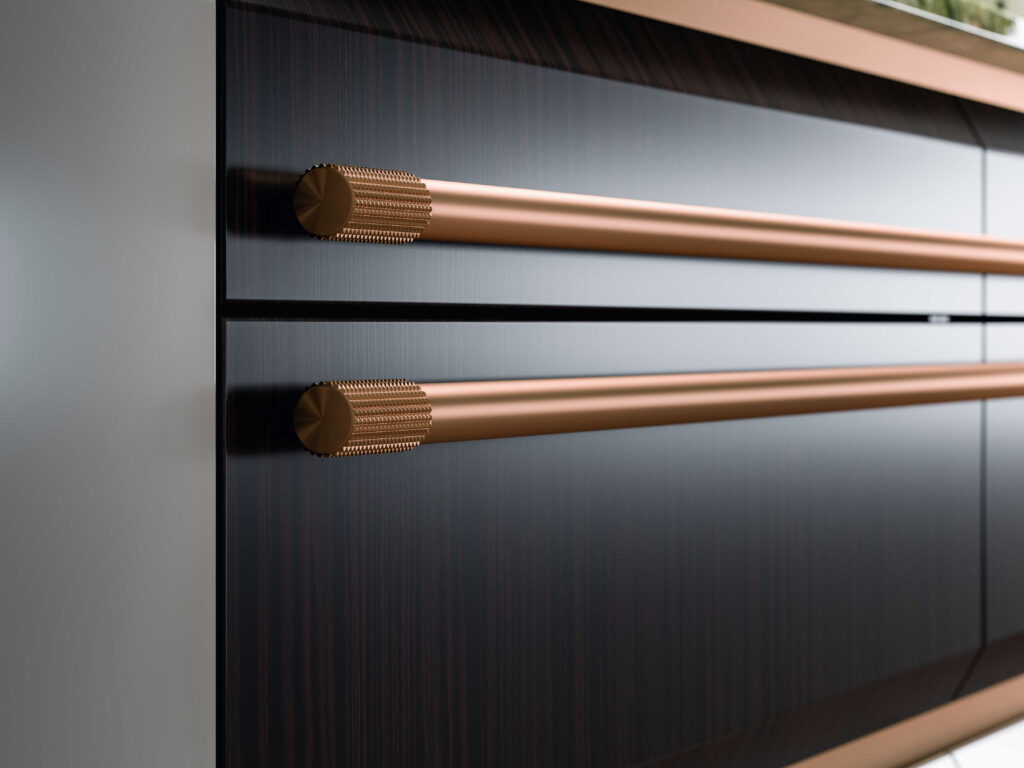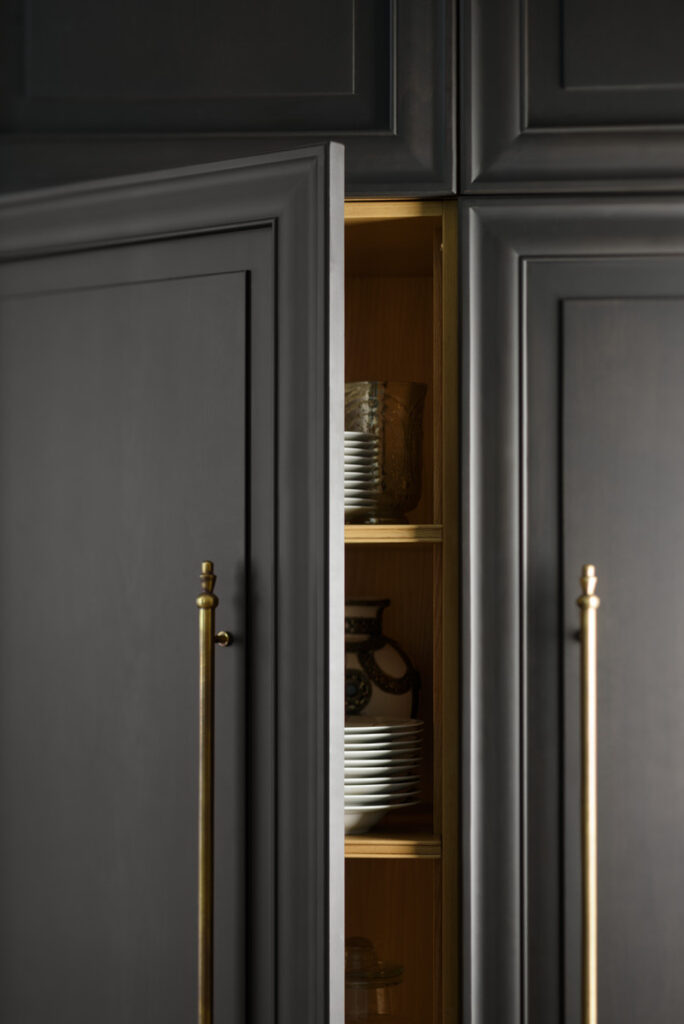Handles are accessories with a high aesthetic value, which are able to influence the appearance of whole rooms. That is why at Prestige we take great care in the selection of this detail. It is very important during the project and design of a space, without which the overall effect of the room can be ruined or distorted in any way. Your kitchen can be more classical or more contemporary just by the choice of certain details, to be chosen very carefully and with a clear aesthetic and stylistic idea.
Like everything else in our daily lives, starting with clothing and colour taste for example, there is no right or wrong solution for choosing handles: it all depends on your personal taste, but there are factors that can influence and guide your choices.
Here is a list of tips to help you choose the perfect handle, not only in terms of aesthetics, but also in the practical aspects, taking into consideration the more technical and functional aspects.
STYLE:
First consider the general style you want to give your kitchen. Will it be modern, classic, rustic or minimalist? Choosing handles that match with the overall style and design of the kitchen is essential to achieve a cohesive look. Handles are available in a wide range of styles and designs to suit different needs and tastes. For example, minimalist handles might suit a modern style, while more elaborate handles might suit a traditional-inspired kitchen.
MATERIAL:
Kitchen handles can be made of many different materials, including stainless steel, brass, aluminium, wood, plastic and ceramic. Handles are subject to frequent use, so it is important to choose high-quality materials that will stand the test of time. Choose a material that suits your taste but that is also durable and easy to clean.

DIMENSIONS:
The size of the handle must be proportionate to the size of the kitchen furniture. Handles that are too large or too small can upset the overall appearance.
TYPE:
There are different types of handles, including rail handles, grooved handles, knobs, C-handles and more. Your choice will depend on your personal preference and usability.
COMFORT AND ERGONOMICS:
Consider the ergonomics of the handle. The shape, size and position on the cabinet should match your use habits to make opening and closing doors and drawers easier. Make sure handles are easy to use is important for a functional kitchen, especially if you plan to open and close furniture frequently.

COLOUR AND FINISHING:
Make sure that the colour and finish of the handle matches or contrasts well with the colour of the kitchen furniture and appliances and with the colours of the walls and floor.
MAINTENANCE:
Consider the ease of maintenance of handles. Some materials and finishes require more care than others. Handles should be easy to clean, as they can accumulate dirt and grease over time. Choosing handles with smooth, easy-to-clean surfaces can simplify kitchen maintenance.
STYLISTIC COHERENCE:
Consider how the handle will fit in with the other elements in the room. It is important that the handles fit with the elements of the kitchen in a way that coordinates with the rest of the décor. This may mean matching them to the colour and material of the furniture or creating a deliberate contrast for a bolder style. All of this helps to create an atmosphere that is in line with your taste but most importantly, in harmony.

In short, the choice of handles in a kitchen should not be overlooked. As well as playing a central role in your everyday life in the opening and closing of elements, handles contribute significantly to the general aesthetics and practicality of the kitchen area. Their choice should be made with the style of the furniture, the favourite material and practical needs in mind. It is important to take the right amount of time in choosing handles to meet the specific requirements of your kitchen project.






